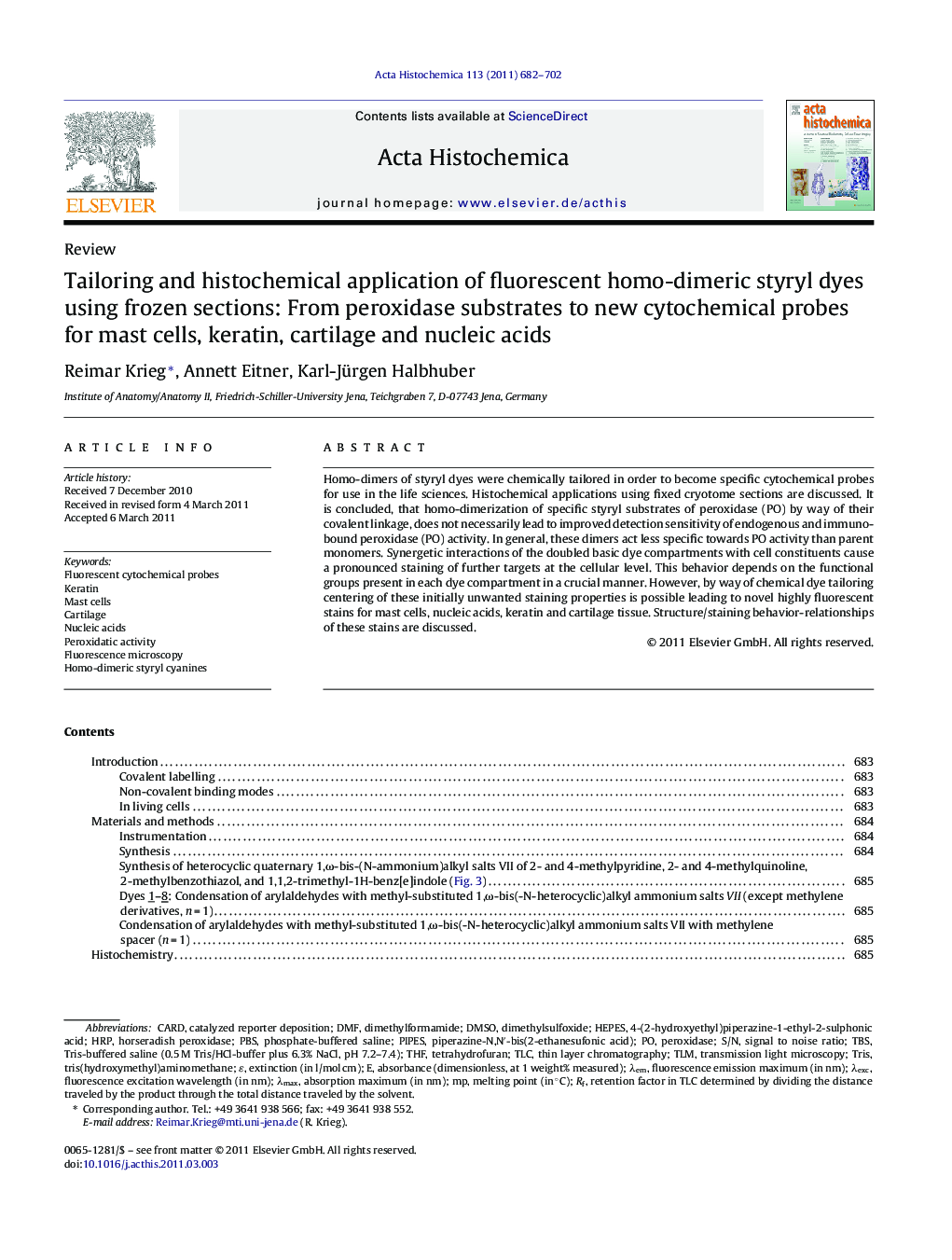| Article ID | Journal | Published Year | Pages | File Type |
|---|---|---|---|---|
| 1924006 | Acta Histochemica | 2011 | 21 Pages |
Homo-dimers of styryl dyes were chemically tailored in order to become specific cytochemical probes for use in the life sciences. Histochemical applications using fixed cryotome sections are discussed. It is concluded, that homo-dimerization of specific styryl substrates of peroxidase (PO) by way of their covalent linkage, does not necessarily lead to improved detection sensitivity of endogenous and immuno-bound peroxidase (PO) activity. In general, these dimers act less specific towards PO activity than parent monomers. Synergetic interactions of the doubled basic dye compartments with cell constituents cause a pronounced staining of further targets at the cellular level. This behavior depends on the functional groups present in each dye compartment in a crucial manner. However, by way of chemical dye tailoring centering of these initially unwanted staining properties is possible leading to novel highly fluorescent stains for mast cells, nucleic acids, keratin and cartilage tissue. Structure/staining behavior-relationships of these stains are discussed.
